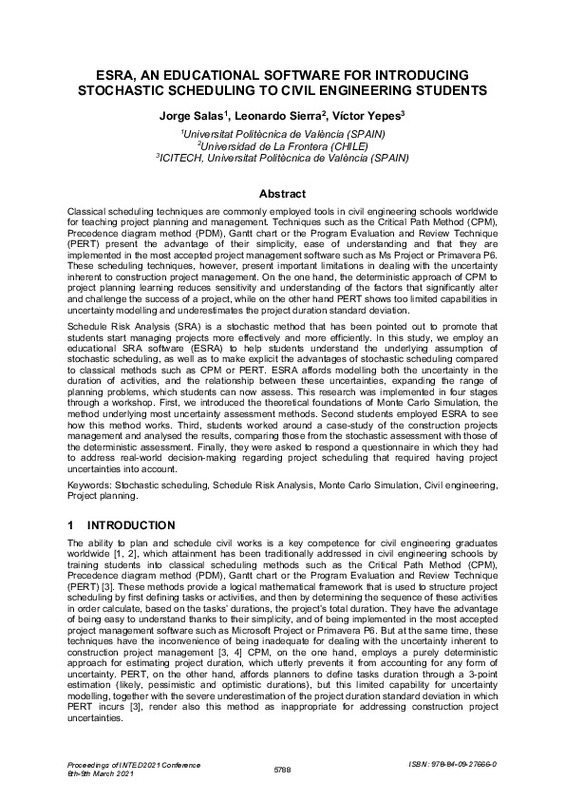JavaScript is disabled for your browser. Some features of this site may not work without it.
Buscar en RiuNet
Listar
Mi cuenta
Estadísticas
Ayuda RiuNet
Admin. UPV
ESRA, an educational software for introducing stochastic scheduling to civil engineering students
Mostrar el registro completo del ítem
Salas, J.; Sierra, L.; Yepes, V. (2021). ESRA, an educational software for introducing stochastic scheduling to civil engineering students. IATED Academy. 5788-5798. https://doi.org/10.21125/inted.2021.1169
Por favor, use este identificador para citar o enlazar este ítem: http://hdl.handle.net/10251/177276
Ficheros en el ítem
Metadatos del ítem
| Título: | ESRA, an educational software for introducing stochastic scheduling to civil engineering students | |
| Autor: | Salas, Jorge Sierra, Leonardo | |
| Entidad UPV: |
|
|
| Fecha difusión: |
|
|
| Resumen: |
[EN] Classical scheduling techniques are commonly employed tools in civil engineering schools worldwide for teaching project planning and management. Techniques such as the Critical Path Method (CPM), Precedence diagram ...[+]
|
|
| Palabras clave: |
|
|
| Derechos de uso: | Reserva de todos los derechos | |
| ISBN: |
|
|
| Fuente: |
|
|
| DOI: |
|
|
| Editorial: |
|
|
| Versión del editor: | https://doi.org/10.21125/inted.2021.1169 | |
| Título del congreso: |
|
|
| Lugar del congreso: |
|
|
| Fecha congreso: |
|
|
| Tipo: |
|









